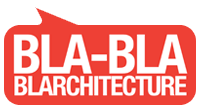203car_WHAT_HANGAR!? SCALE + FORM CHECKLIST_
- What type of aircraft, or mix of types do you intend the hangar for?
- Do you want nose entry or tail entry? Nose entry can be slightly cheaper but loses flexibility for mixes of types and for storage of tail docking.
- What site dimensions are available. How much apron length?
- What depth behind the apron? What are the height restrictions on the apron (door) side? At the two sides?
- Is it a paint hangar? (If this is the case it will be better to restrict the volume by shape, partitions and ceilings)
- What area of ground floor workshop is needed (for engines, undercarriage, heavy work)?
- Do you need any upper floor workshop? (For trim, avionics etc)
- What area of office do you need?
- Do you need to have the ability to extend the width, and door width, with no columns? (If you do, then the hangar should be of the cantilever type: and this type must have substantial workshops and office space behind)
- Do you foresee additional bays in the width? Or the length? (This is possible but we must know). Please note that it is not normally possible to increase the height of a hangar or doors after construction.
- How much of the main door do you need to open at any one time?
- Is there space for outriggers on the doors?
- Is cheapness the main consideration or is flexibility in use important?
- Do you need any cranes suspended from the roof? (This is possible but please note that the hangar may need to be higher, and stronger, and more costly, to fit the cranes). We need to know any possible crane requirement before we start work! What are the maximum lifts you will need? NOTE: that it is often better, structurally, to have the hangar the same clear height throughout, which also gives the maximum flexibility in use. Tails may always be jacked in substantial jacking slots inside the roof structure, in many locations around the hangar. There is no huge saving by restricting the spans and heights over parts of the area.
So… there are five types of spaces in hangar facilities:
- Hangar Area
- Shops Area
- Warehouse Area
- Office/Administration and Specialty Areas
- Building Utilities Area
Careful analysis of the following will allow designer to determine the space needs for general spaces listed above common to aircraft hangars.
- Identification of the type of aircraft that will populate the hangar.
- Identification of the aircraft mix that will populate the hangar.
- Identification of the aircraft maintenance functions that will be performed in the facility.
- Estimation of the type and amount of shop area required to perform the maintenance functions.
- Estimation of the type and amount of warehouse space required to support the maintenance effort.
- Estimation of the floor space required for Office and Administration Area.
- Identification of special purpose areas such as locker rooms, toilets, personnel berthing area, dining areas and public lobbies to name a few.
- Estimation of the floor space required for the Building Utilities Area.
SAY WHAT_!?

